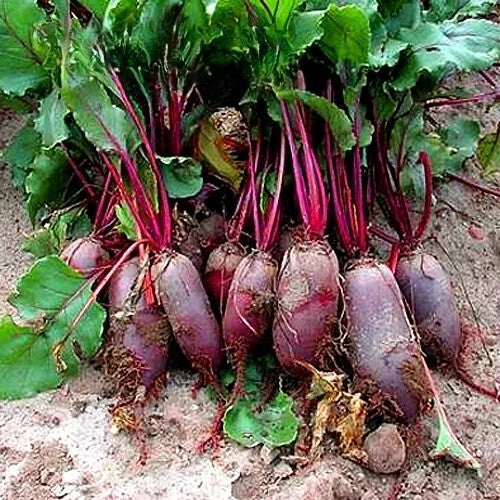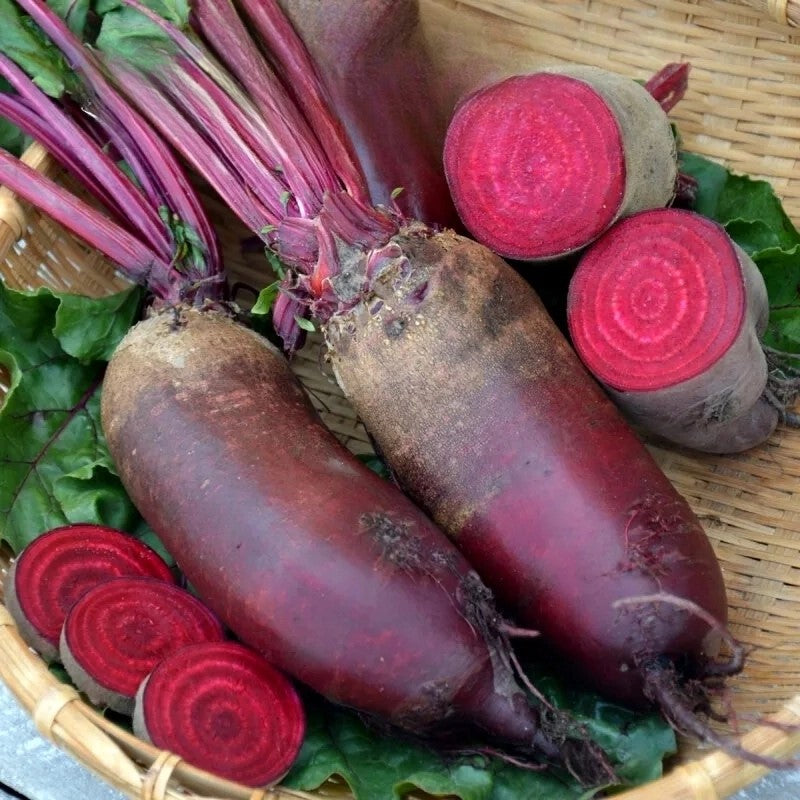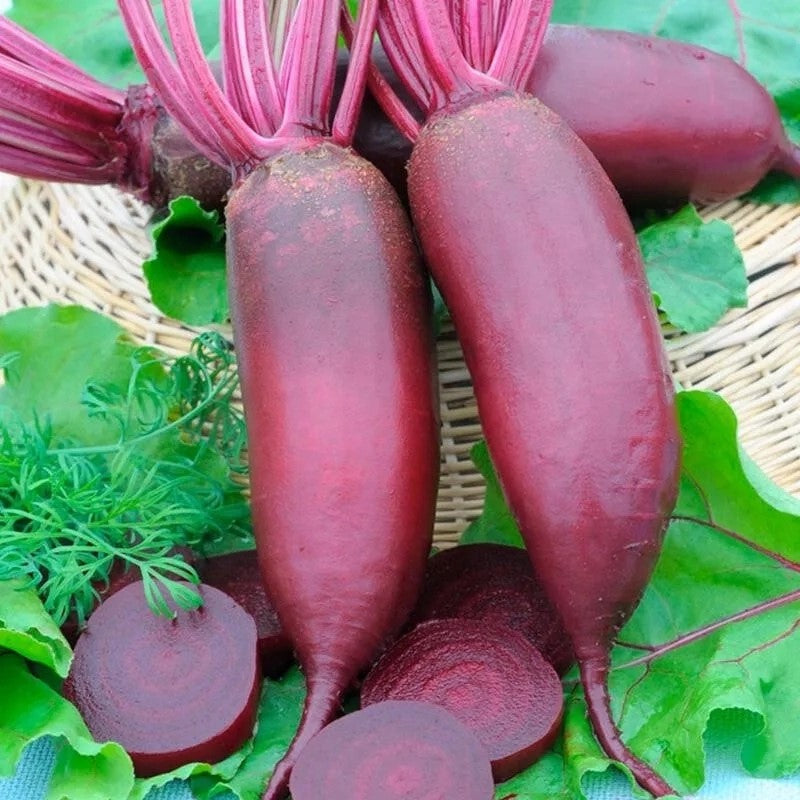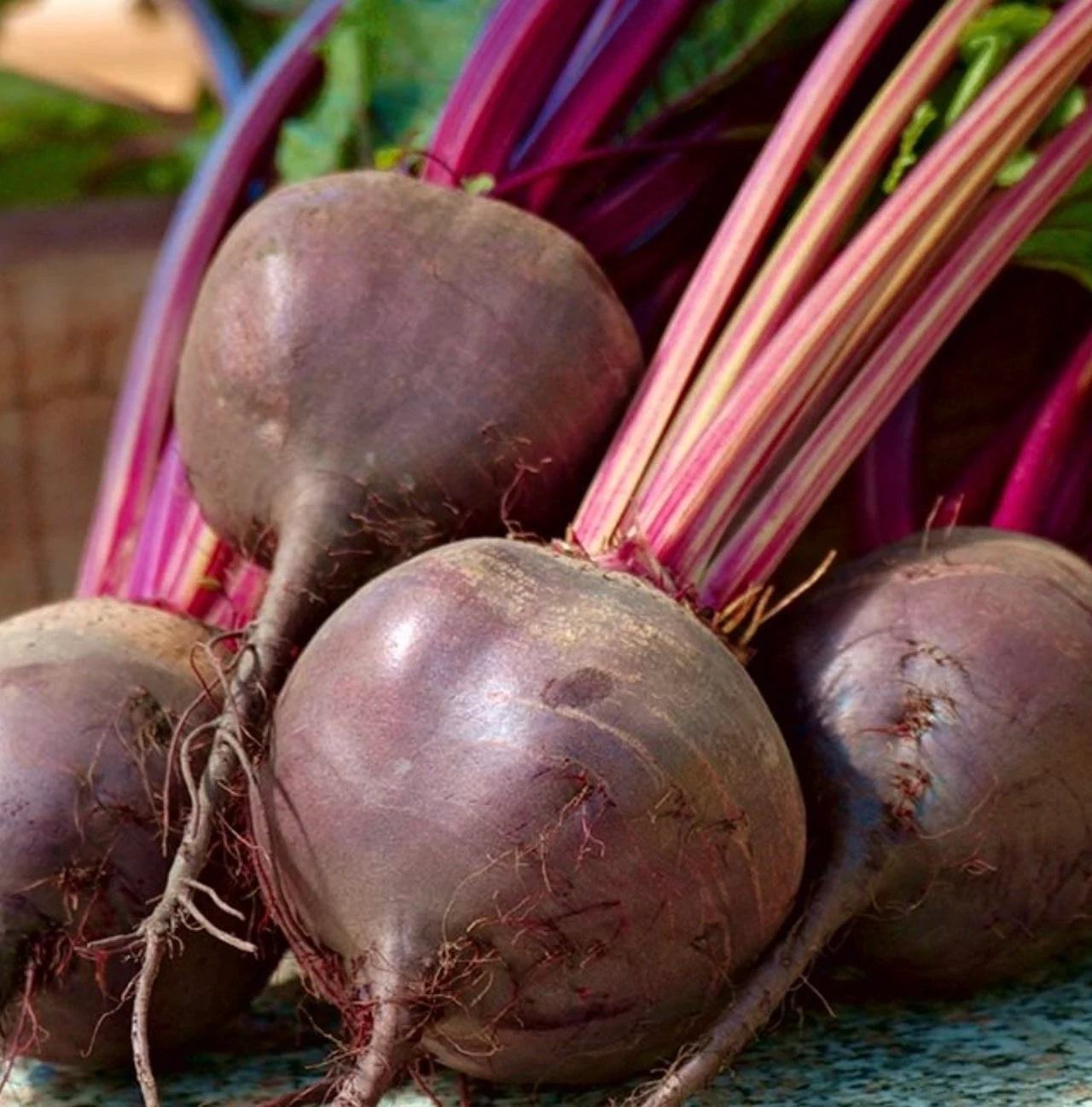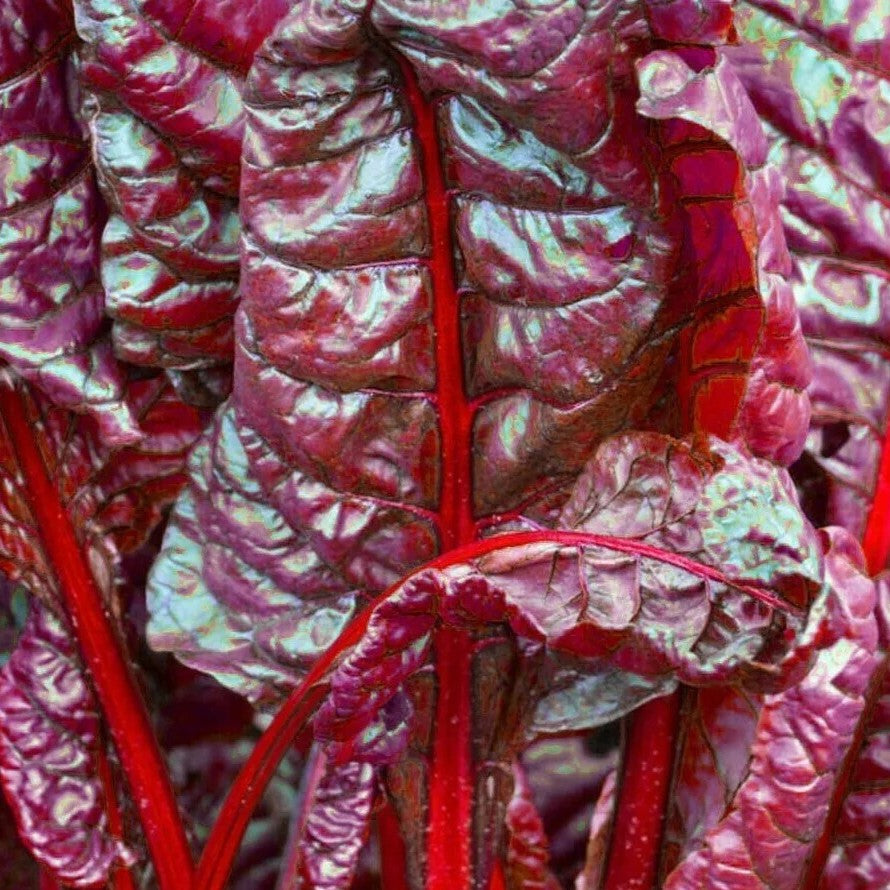Sort by:
5 products
5 products
Beetroot 'Alexis' – Seeds
(Beta vulgaris) – Sweet, Tender & Early Harvest Variety
Beetroot 'Alexis' is a reliable, early-maturing variety known for its smooth, uniform, round roots with intensely dark red flesh that remains free of rings. It has a sweet, tender flavor even when roots grow larger, making it suitable for fresh eating, roasting, juicing, and preserving. The variety also shows good resistance to bolting.
Key Features
-
Type: Hardy biennial, grown as annual
-
Roots: Round, uniform, smooth skin
-
Flesh: Deep red, no rings
-
Flavor: Sweet, tender, mild earthy taste
-
Harvest: Early to mid-season
-
Use: Fresh salads, cooking, juicing, pickling, storage
Ideal For
-
Kitchen & home gardens
-
Early cropping with reliable yields
-
Fresh culinary use & winter storage
-
Succession sowing for continuous supply
Sowing & Growing
-
Sow outdoors: April–July, in rows 2–3 cm deep.
-
Spacing: 10 cm between plants, 25–30 cm between rows.
-
Soil: Fertile, light, well-drained, stone-free soil.
-
Harvest: June–October, depending on sowing time.
Care Tips
-
Thin seedlings early to allow roots to swell properly.
-
Keep soil consistently moist for tender, sweet roots.
-
Harvest when small for baby beets or later for larger storage roots.
Beetroot 'Detroit 2 Crimson Globe' – Seeds (Beta vulgaris)
The classic Detroit 2 Crimson Globe beetroot is a reliable and popular variety, producing smooth, round roots with deep crimson flesh. Known for its sweet, earthy flavor and fine texture, it’s ideal for roasting, boiling, pickling, or enjoying raw in salads. An excellent keeper, it stores well after harvesting, making it a staple for kitchen gardens.
How to Grow
-
Sow seeds outdoors from March to July.
-
Sow thinly, 2 cm deep, in rows 30 cm apart.
-
Thin seedlings to 10 cm apart once established.
-
Prefers fertile, well-drained soil in full sun.
-
Harvest when roots are firm and smooth, around golf-ball size for the best flavor.
Key Features
-
Classic heirloom beetroot variety
-
Smooth, round roots with deep crimson flesh
-
Sweet, earthy taste with tender texture
-
Suitable for fresh use, storage, or pickling
-
Easy and reliable for all gardeners
Ideal For
-
Roasting, boiling, and pickling
-
Salads and fresh eating
-
Kitchen gardens, allotments, or raised beds
-
Long-term storage after harvest
Sowing & Harvest
-
Sow: March to July
-
Depth: 2 cm
-
Spacing: 10 cm between plants, 30 cm between rows
-
Harvest: June to October
Quick Tip
-
For a continuous supply, sow little and often every 2–3 weeks until midsummer.
Beet Leaf 'Bull's Blood' – Seeds (Beta vulgaris)
Beet Leaf 'Bull's Blood' is a striking dual-purpose variety, prized for its deep red-purple leaves and tender beet roots. The young leaves are excellent for adding vibrant color and a mild, earthy flavor to salads, while mature leaves can be cooked like spinach. The roots are small but sweet, making them ideal for roasting or boiling.
With its ornamental foliage and culinary versatility, this variety is perfect for gardeners who want both beauty and harvest from the same plant.
How to Grow
-
Sow outdoors: March – July
-
Depth: 1–2 cm
-
Spacing: 10 cm apart in rows 30 cm apart
-
Position: Full sun
-
Soil: Fertile, well-drained, rich in organic matter
-
Watering: Keep soil moist to encourage steady growth
Key Features
-
Dual-purpose variety grown for both leaves and roots
-
Striking dark red-purple foliage adds color to the garden
-
Young leaves ideal for salads, mature leaves for cooking
-
Sweet, tender roots suitable for roasting or boiling
-
Easy to grow and highly ornamental
Harvest
-
Baby leaves: From 30 days
-
Roots: July – October
-
Harvest young leaves regularly to encourage new growth.
Short Tip
Pick leaves when young for the best flavor and continuous regrowth.
Swiss Chard 'Rainbow' Mix – Seeds (Beta vulgaris)
Swiss Chard 'Rainbow' Mix is a vibrant blend of brightly colored chard varieties, producing stems in shades of red, pink, yellow, orange, and white. Not only is it highly decorative in the garden, but it’s also delicious and nutritious. The tender leaves can be used like spinach, while the crunchy stems add color and flavor to stir-fries, soups, and sautés. A cut-and-come-again crop, it will provide a long season of harvests from summer well into autumn.
How to Grow
-
Sow outdoors: March – August, directly into prepared soil.
-
Soil: Fertile, well-drained soil in full sun or partial shade.
-
Spacing: Thin seedlings to 25–30 cm apart.
-
Keep soil consistently moist for tender, flavorful leaves.
Key Features
-
Mix of colorful chard varieties
-
Edible leaves and crunchy stems
-
Long cropping season
-
Cut-and-come-again harvests
-
Both ornamental and edible
Ideal For
-
Kitchen gardens and allotments
-
Edible borders and decorative planting
-
Healthy cooking and juicing
Sowing & Harvest
-
Sow: March – August
-
Harvest: June – November
Quick Tip
Harvest young leaves regularly for salads and cooking. Mature stems can be steamed or sautéed for added color and flavor.
Beetroot (Cylindrica) ‘Kahira’ – Seeds (Beta vulgaris)
Beetroot ‘Kahira’ is a traditional Egyptian cylindrical variety, well-loved for its uniform shape, tender flesh, and sweet earthy flavor. Its elongated roots slice easily into even rounds, making it a favorite for cooking, pickling, and storage. Productive and reliable, ‘Kahira’ is a hardy beetroot that thrives in a wide range of soils and climates.
How to Grow
-
Sow direct outdoors: March – July in well-prepared soil.
-
Sow 2 cm deep in rows 30 cm apart.
-
Thin seedlings to 10 cm apart once established.
-
Keep soil moist for tender, juicy roots.
Key Features
-
Cylindrical roots for easy slicing
-
Sweet, tender flesh with rich flavor
-
High-yielding and uniform growth
-
Great for cooking, salads, and pickling
-
Excellent storage variety
Ideal For
-
Fresh salads, roasting, and boiling
-
Pickling and preserving
-
Long-term storage for winter use
Sowing & Harvest
-
Sow: March – July
-
Harvest: June – October
Quick Tip
Harvest when young for extra tenderness, or allow to mature for larger roots ideal for storage and preserving.

